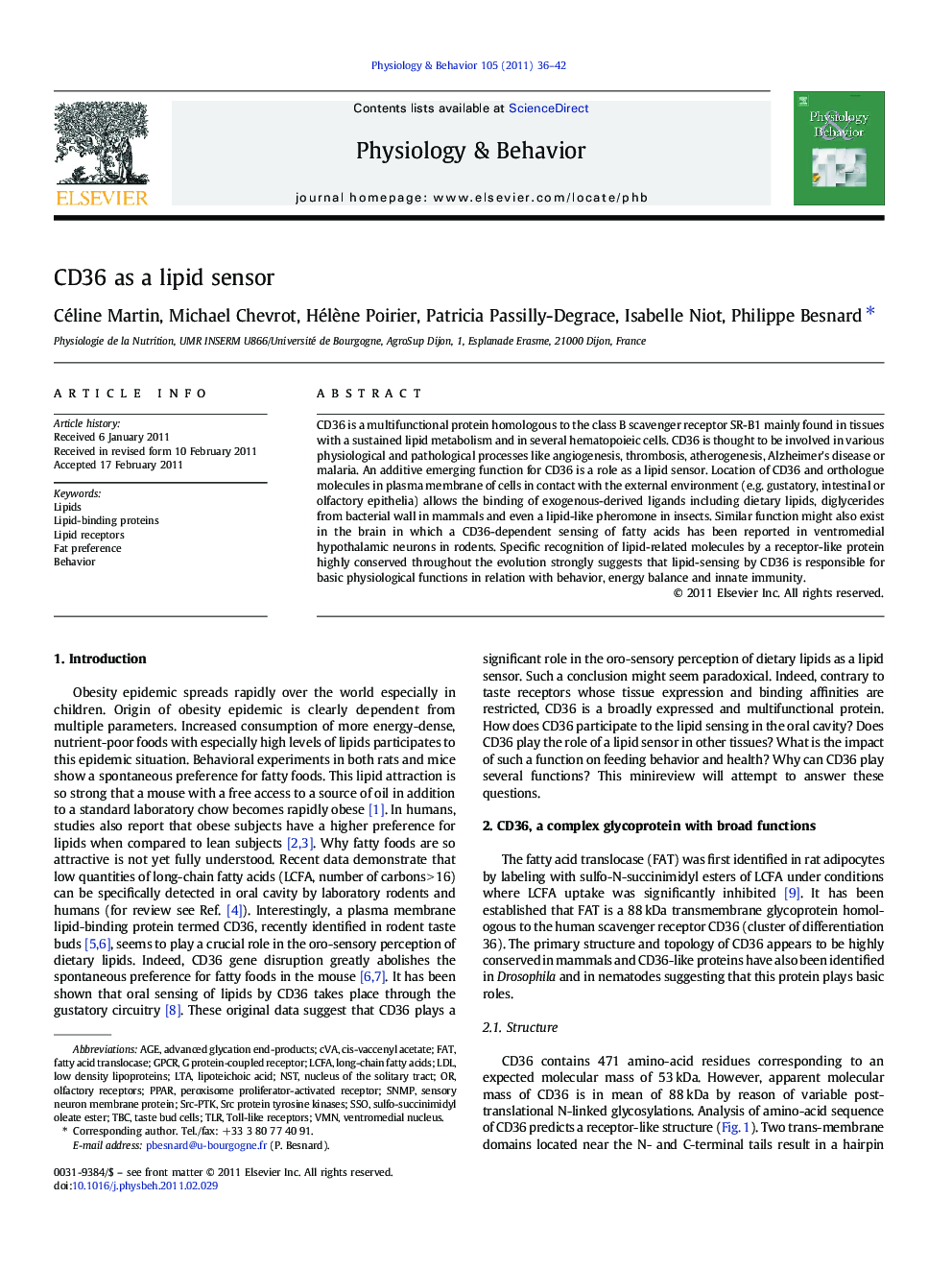| Article ID | Journal | Published Year | Pages | File Type |
|---|---|---|---|---|
| 2844667 | Physiology & Behavior | 2011 | 7 Pages |
CD36 is a multifunctional protein homologous to the class B scavenger receptor SR-B1 mainly found in tissues with a sustained lipid metabolism and in several hematopoieic cells. CD36 is thought to be involved in various physiological and pathological processes like angiogenesis, thrombosis, atherogenesis, Alzheimer's disease or malaria. An additive emerging function for CD36 is a role as a lipid sensor. Location of CD36 and orthologue molecules in plasma membrane of cells in contact with the external environment (e.g. gustatory, intestinal or olfactory epithelia) allows the binding of exogenous-derived ligands including dietary lipids, diglycerides from bacterial wall in mammals and even a lipid-like pheromone in insects. Similar function might also exist in the brain in which a CD36-dependent sensing of fatty acids has been reported in ventromedial hypothalamic neurons in rodents. Specific recognition of lipid-related molecules by a receptor-like protein highly conserved throughout the evolution strongly suggests that lipid-sensing by CD36 is responsible for basic physiological functions in relation with behavior, energy balance and innate immunity.
Research Highlights► CD36 plays the role of a lipid sensor along the oro-intestinal in the mouse. ► CD36-mediated lipid sensing affects eating behavior and energy balance. ► CD36 might serve of signaling bridge in the recognition and transfer of lipids to receptor partners.
